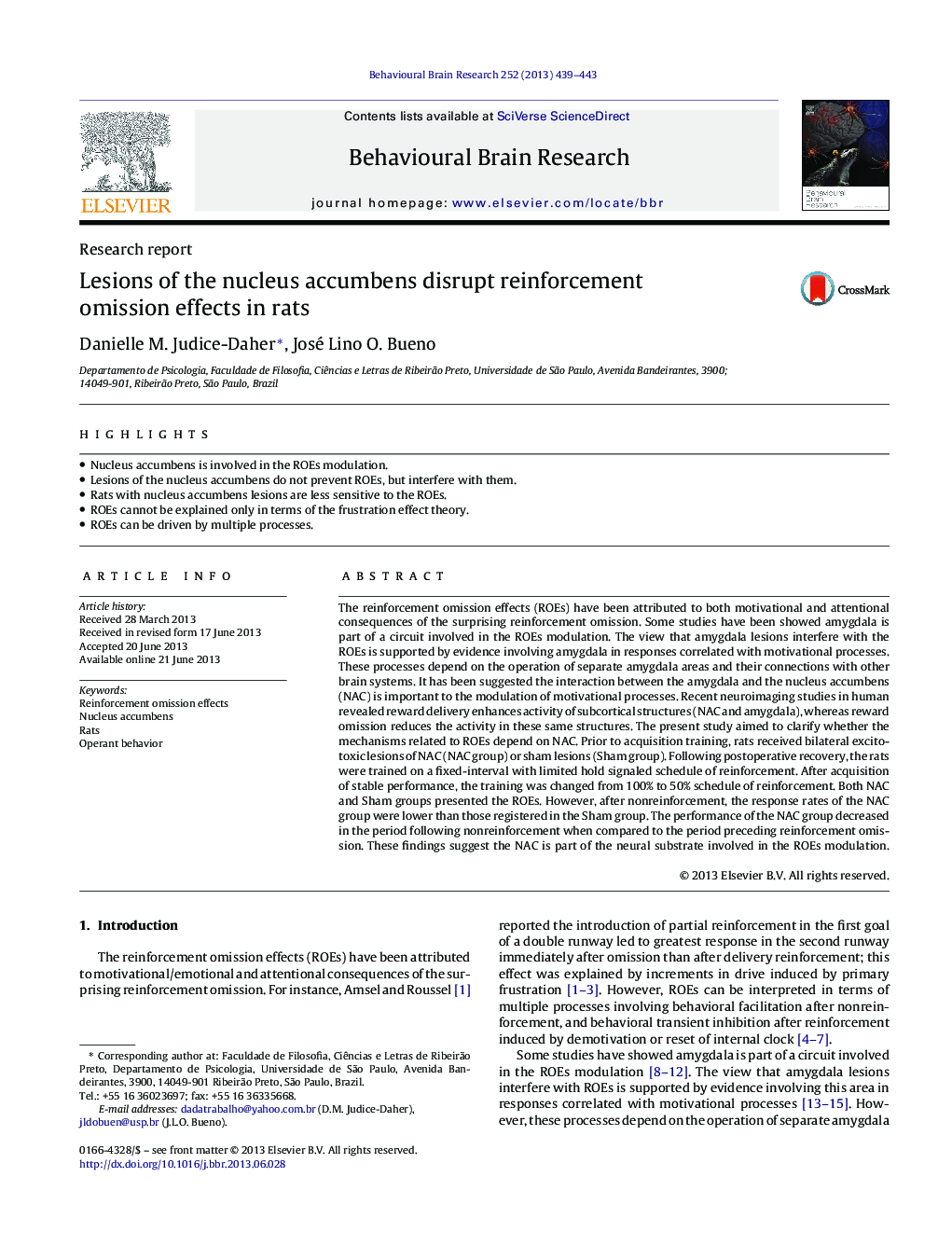| کد مقاله | کد نشریه | سال انتشار | مقاله انگلیسی | نسخه تمام متن |
|---|---|---|---|---|
| 4312635 | 1612980 | 2013 | 5 صفحه PDF | دانلود رایگان |

• Nucleus accumbens is involved in the ROEs modulation.
• Lesions of the nucleus accumbens do not prevent ROEs, but interfere with them.
• Rats with nucleus accumbens lesions are less sensitive to the ROEs.
• ROEs cannot be explained only in terms of the frustration effect theory.
• ROEs can be driven by multiple processes.
The reinforcement omission effects (ROEs) have been attributed to both motivational and attentional consequences of the surprising reinforcement omission. Some studies have been showed amygdala is part of a circuit involved in the ROEs modulation. The view that amygdala lesions interfere with the ROEs is supported by evidence involving amygdala in responses correlated with motivational processes. These processes depend on the operation of separate amygdala areas and their connections with other brain systems. It has been suggested the interaction between the amygdala and the nucleus accumbens (NAC) is important to the modulation of motivational processes. Recent neuroimaging studies in human revealed reward delivery enhances activity of subcortical structures (NAC and amygdala), whereas reward omission reduces the activity in these same structures. The present study aimed to clarify whether the mechanisms related to ROEs depend on NAC. Prior to acquisition training, rats received bilateral excitotoxic lesions of NAC (NAC group) or sham lesions (Sham group). Following postoperative recovery, the rats were trained on a fixed-interval with limited hold signaled schedule of reinforcement. After acquisition of stable performance, the training was changed from 100% to 50% schedule of reinforcement. Both NAC and Sham groups presented the ROEs. However, after nonreinforcement, the response rates of the NAC group were lower than those registered in the Sham group. The performance of the NAC group decreased in the period following nonreinforcement when compared to the period preceding reinforcement omission. These findings suggest the NAC is part of the neural substrate involved in the ROEs modulation.
Journal: Behavioural Brain Research - Volume 252, 1 September 2013, Pages 439–443